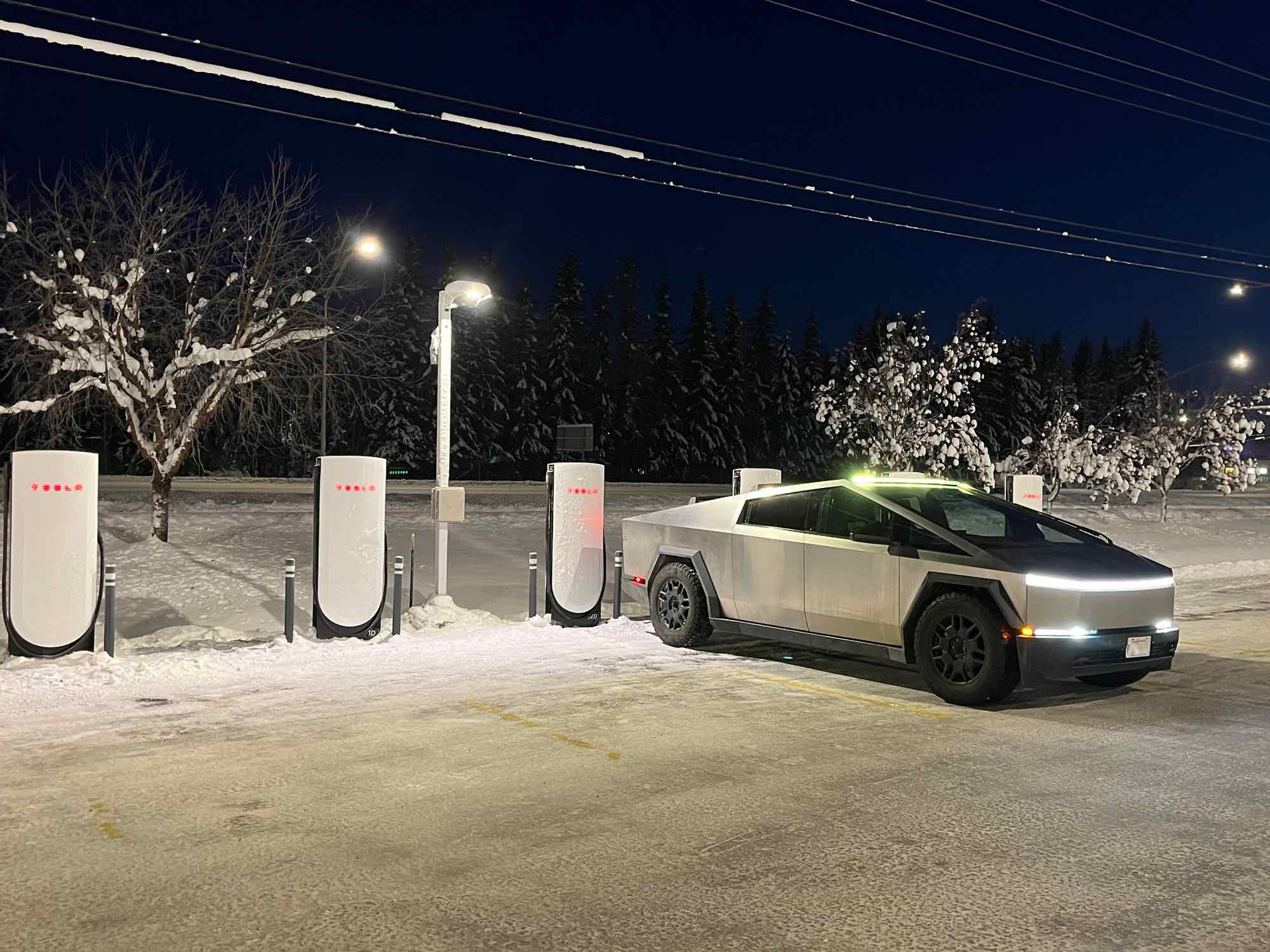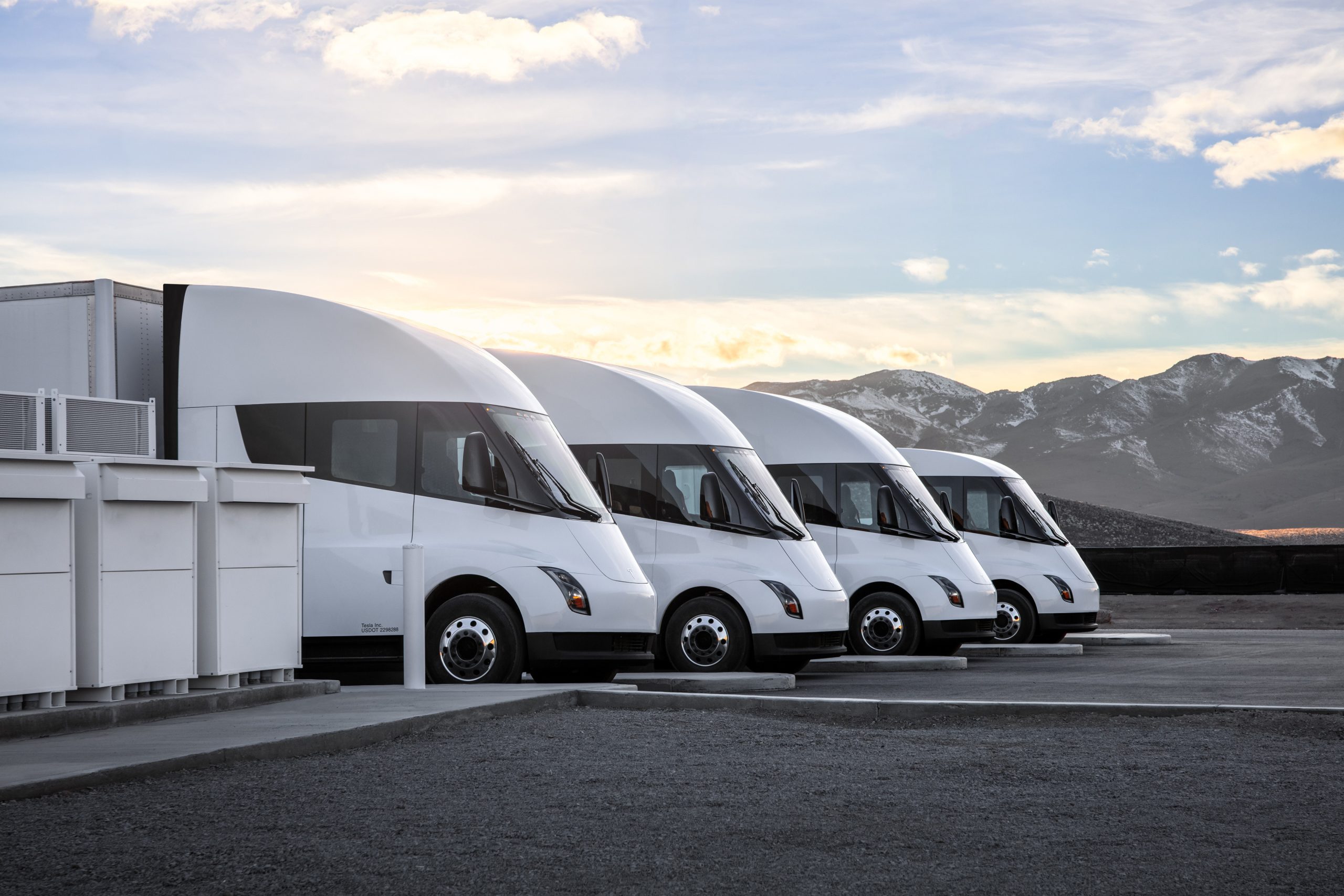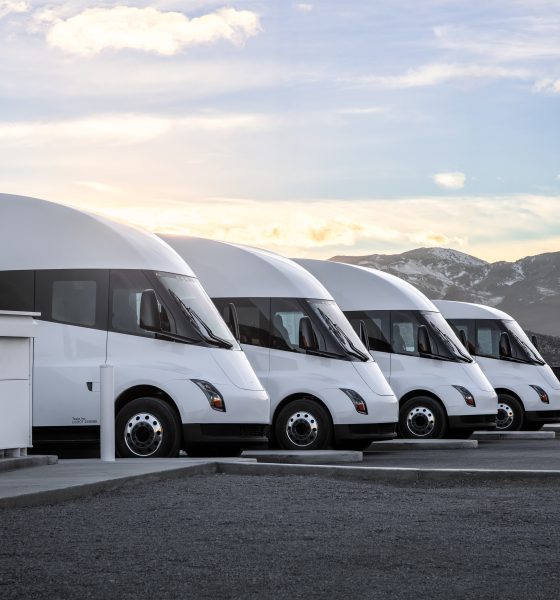Tesla is set to deliver its highly-anticipated all-electric Semi today for the first time. Will the truck live up to the hype?
Roughly two months ago, CEO Elon Musk announced Tesla would deliver the Semi to Frito Lay locations in California following the vehicle’s acquisition of an EPA Certificate of Conformity. Tesla and Musk had previously teased the ‘imminent’ arrival of the Semi for several years, but the hype of this year can only be slightly equated to the energy that Tesla and Frito Lay expressed last year: both had confirmed deliveries in December 2021, only for the trucks to never make it to their destination.
Fast forward a year, and what has changed? For starters, last year, Tesla did not earn an EPA certification for the Semi, which is required by law. The fact that Tesla finally received this certification and set up a special delivery event in Nevada can only lead Musk’s loyal believers and even skeptics to believe that the Semi is finally here, and it seems that it really is.
Excited to announce start of production of Tesla Semi Truck with deliveries to @Pepsi on Dec 1st! pic.twitter.com/gq0l73iGRW
— Elon Musk (@elonmusk) October 6, 2022
Now that the Semi is finally here, or will be in a few hours from when this article is published, the real questions begin to surface: Will it really change the trucking industry? How does the Semi match up to Class 8 EVs already on the market? How long will it take to get one?
Will it really change the trucking industry?
The Tesla Semi is no doubt a huge development in the world of EV trucking. Will it change the industry? If it can live up to its astronomical range predictions, which are rumored to be around 500 miles when pulling an 81,000-pound load, it surely can raise the bar for competitors. The currently offered EV trucks on the market from Volvo, Freightliner, and Nikola offer significantly less in terms of range on a full charge. However, many of these trucks are geared toward local or regional logistics.
The Semi is definitely different than the others. A breakdown of the Semi vs. other trucks on the market below will break it down further. Where Tesla has set itself apart from competitors is in terms of tech, and just looking at the Semi, you know it’s different from the rest. The throne is set in the center of the cabin, dual monitors will track data and analytics for performance while offering basic features like navigation. Whether it is better or not, well, we’ll have to wait for some trucking experts drive it for a while.
How does the Semi match up to Class 8 EVs already on the market?
The Volvo VNR’s highest-range trim is its 6×4 Tractor, which packs 275 miles of range when configured with its six-battery offering. It also is capable of regenerating between 5 and 15 percent of its energy through braking. It has a top speed of 68 MPH, and is an ideal fit for “Local distribution and regional transportation with planned routes and frequent stops,” especially food service delivery, Volvo said. This may be why McDonald’s Canada ordered a few.
The Freightliner eCascadia just was delivered for the first time this week, with Penske commemorating first deliveries. This truck packs a 230-mile range rating with its top-of-the-line offering. Freightliner only offers a day cab, and with the range specs, it would also be ideal for local or regional deliveries. Its 80 percent charging in 90 minutes will keep deliveries going without much of a delay.
Nikola’s Tre offers 330 miles of range, the most impressive number thus far. Nikola has ramped up production of the Tre recently to reach 75 units in Q3. Arguably the best competitor to the Tesla Semi, the Tre may not offer charging speeds as fast as the eCascadia (80 percent charge in 160 minutes), but its impressive range ratings make it more applicable for longer routes.
The Semi offers the best of all of these, along with a 500-mile range rating, according to recent tests performed by Tesla. At first glance, the Semi just seems like a market-leading version of most Class 8 EVs on the market. Tesla still leans on self-driving and autonomous trucking as where the Semi will truly set itself apart from competitors. It may be some time before truckers can let the Semi drive them between hubs.
For what it’s worth, we received several emails from readers who were skeptical of the 500-mile claim from Musk. We were asked several times whether the trip was taken on a single charge.
How long will it take to get a Tesla Semi?
Tesla Semi production could reach 100 units this year, company Chair Robyn Denholm said. Next year, Tesla wants to build 50,000.
The potential production rate of 50,000 units is nothing to bat an eye at. However, Tesla has some big plans for 2023, and they include ramping Cybertruck production at Gigafactory Texas, a potential revamp of the Model 3 in Fremont, and more production in Germany and China. The Semi will undoubtedly reach higher production rates next year, but it will be difficult to scale production of a fresh vehicle this quickly.
Battery availability also comes into question, as it was the issue that kept the Semi from being built two years ago when Musk announced volume production would kick off. Tesla is building a lot of cars and using a lot of batteries. We know Tesla isn’t using the 4680 cell for the Semi, which means the much more widely available 2170 cell will not limit the Semi’s production rate, at least not in my estimation.
How long it takes to get a Semi is purely reliant on how fast Tesla can scale production. Tesla has typically done a good job of scaling its passenger vehicles, but the Semi is a different animal.
Tesla’s Semi Delivery Event will take place this evening at Gigafactory Nevada in Reno.
Disclosure: Joey Klender is a TSLA Shareholder.
I’d love to hear from you! If you have any comments, concerns, or questions, please email me at joey@teslarati.com. You can also reach me on Twitter @KlenderJoey, or if you have news tips, you can email us at tips@teslarati.com.

Cybertruck
Tesla updates Cybertruck owners on timeline of massive feature yet to ship

Tesla is updating Cybertruck owners on its timeline of a massive feature that has yet to ship: Powershare with Powerwall.
Powershare is a bidirectional charging feature exclusive to Cybertruck, which allows the vehicle’s battery to act as a portable power source for homes, appliances, tools, other EVs, and more. It was announced in late 2023 as part of Tesla’s push into vehicle-to-everything energy sharing, and acting as a giant portable charger is the main advantage, as it can provide backup power during outages.
Cybertruck’s Powershare system supports both vehicle-to-load (V2L) and vehicle-to-home (V2H), making it flexible and well-rounded for a variety of applications.
However, even though the feature was promised with Cybertruck, it has yet to be shipped to vehicles. Tesla communicated with owners through email recently regarding Powershare with Powerwall, which essentially has the pickup act as an extended battery.
Powerwall discharge would be prioritized before tapping into the truck’s larger pack.
However, Tesla is still working on getting the feature out to owners, an email said:
“We’re writing to let you know that the Powershare with Powerwall feature is still in development and is now scheduled for release in mid-2026.
This new release date gives us additional time to design and test this feature, ensuring its ability to communicate and optimize energy sharing between your vehicle and many configurations and generations of Powerwall. We are also using this time to develop additional Powershare features that will help us continue to accelerate the world’s transition to sustainable energy.”
Owners have expressed some real disappointment in Tesla’s continuous delays in releasing the feature, as it was expected to be released by late 2024, but now has been pushed back several times to mid-2026, according to the email.
Foundation Series Cybertruck buyers paid extra, expecting the feature to be rolled out with their vehicle upon pickup.
Cybertruck’s Lead Engineer, Wes Morrill, even commented on the holdup:
As a Cybertruck owner who also has Powerwall, I empathize with the disappointed comments.
To their credit, the team has delivered powershare functionality to Cybertruck customers who otherwise have no backup with development of the powershare gateway. As well as those with solar…
— Wes (@wmorrill3) December 12, 2025
He said that “it turned out to be much harder than anticipated to make powershare work seamlessly with existing Powerwalls through existing wall connectors. Two grid-forming devices need to negotiate who will form and who will follow, depending on the state of charge of each, and they need to do this without a network and through multiple generations of hardware, and test and validate this process through rigorous certifications to ensure grid safety.”
It’s nice to see the transparency, but it is justified for some Cybertruck owners to feel like they’ve been bait-and-switched.
News
Tesla’s northernmost Supercharger in North America opens

Tesla has opened its northernmost Supercharger in Fairbanks, Alaska, with eight V4 stalls located in one of the most frigid cities in the U.S.
Located just 196 miles from the Arctic Circle, Fairbanks’s average temperature for the week was around -12 degrees Fahrenheit. However, there are plenty of Tesla owners in Alaska who have been waiting for more charging options out in public.
There are only 36 total Supercharger stalls in Alaska, despite being the largest state in the U.S.
Eight Superchargers were added to Fairbanks, which will eventually be a 48-stall station. Tesla announced its activation today:
North America’s northernmost Supercharger Fairbanks, AK (8 stalls) opened to public. https://t.co/M4l04DZ6B5 pic.twitter.com/zyL6bDuA93
— Tesla Charging (@TeslaCharging) December 12, 2025
The base price per kWh is $0.43 at the Fairbanks Supercharger. Thanks to its V4 capabilities, it can charge at speeds up to 325 kW.
Despite being the northernmost Supercharger in North America, it is not even in the Top 5 northernmost Superchargers globally, because Alaska is south of Norway. The northernmost Supercharger is in Honningsvåg, Norway. All of the Top 5 are in the Scandanavian country.
Tesla’s Supercharger expansion in 2025 has been impressive, and although it experienced some early-quarter slowdowns due to V3-to-V4 hardware transitions, it has been the company’s strongest year for deployments.
🚨🚨 Tesla Supercharging had a HUGE year, and they deserve to be recognized.
🍔 Opened Tesla Diner, a drive-in movie theater with awesome, Chef-curated cuisine
🔌 Gave access to Superchargers to several EV makers, including Hyundai, Genesis, Mercedes-Benz, Kia, Lucid, Toyota,… pic.twitter.com/yYT2QEbqoW
— TESLARATI (@Teslarati) December 10, 2025
Through the three quarters of 2025, the company has added 7,753 stations and 73,817 stalls across the world, a 16 percent increase in stations and an 18 percent increase in stalls compared to last year.
Tesla is on track to add over 12,000 stalls for the full year, achieving an average of one new stall every hour, an impressive statistic.
Recently, the company wrapped up construction at its Supercharger Oasis in Lost Hills, California, a 168-stall Supercharger that Tesla Solar Panels completely power. It is the largest Supercharger in the world.
News
Tesla shocks with latest Robotaxi testing move
Why Tesla has chosen to use a couple of Model S units must have a reason; the company is calculated in its engineering and data collection efforts, so this is definitely more than “we just felt like giving our drivers a change of scenery.”

Tesla Model S vehicles were spotted performing validation testing with LiDAR rigs in California today, a pretty big switch-up compared to what we are used to seeing on the roads.
Tesla utilizes the Model Y crossover for its Robotaxi fleet. It is adequately sized, the most popular vehicle in its lineup, and is suitable for a wide variety of applications. It provides enough luxury for a single rider, but enough room for several passengers, if needed.
However, the testing has seemingly expanded to one of Tesla’s premium flagship offerings, as the Model S was spotted with the validation equipment that is seen entirely with Model Y vehicles. We have written several articles on Robotaxi testing mules being spotted across the United States, but this is a first:
🚨 Tesla is using Model S vehicles fitted with LiDAR rigs to validate FSD and Robotaxi, differing from the Model Ys that it uses typically
Those Model Y vehicles have been on the East Coast for some time. These Model S cars were spotted in California https://t.co/CN9Bw5Wma8 pic.twitter.com/UE55hx5mdd
— TESLARATI (@Teslarati) December 11, 2025
Why Tesla has chosen to use a couple of Model S units must have a reason; the company is calculated in its engineering and data collection efforts, so this is definitely more than “we just felt like giving our drivers a change of scenery.”
It seems to hint that Tesla could add a premium, more luxury offering to its Robotaxi platform eventually. Think about it: Uber has Uber Black, Lyft has Lyft Black. These vehicles and services are associated with a more premium cost as they combine luxury models with more catered transportation options.
Tesla could be testing the waters here, and it could be thinking of adding the Model S to its fleet of ride-hailing vehicles.
Reluctant to remove the Model S from its production plans completely despite its low volume contributions to the overall mission of transitioning the world to sustainable energy, the flagship sedan has always meant something. CEO Elon Musk referred to it, along with its sibling Model X, as continuing on production lines due to “sentimental reasons.”
However, its purpose might have been expanded to justify keeping it around, and why not? It is a cozy, premium offering, and it would be great for those who want a little more luxury and are willing to pay a few extra dollars.
Of course, none of this is even close to confirmed. However, it is reasonable to speculate that the Model S could be a potential addition to the Robotaxi fleet. It’s capable of all the same things the Model Y is, but with more luxuriousness, and it could be the perfect addition to the futuristic fleet.










